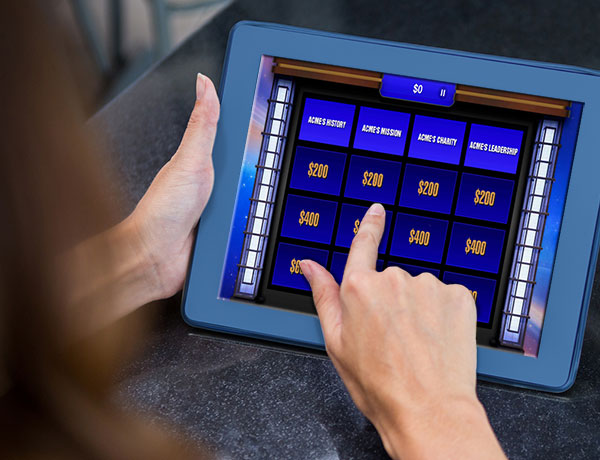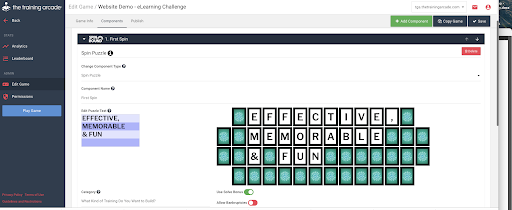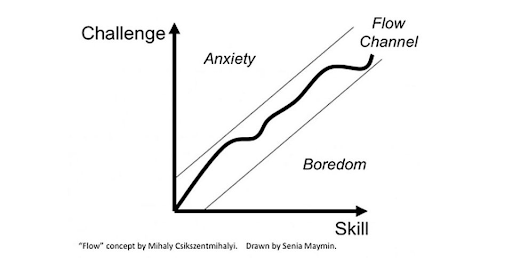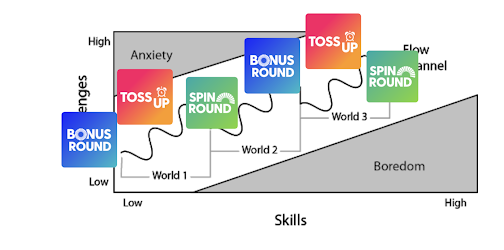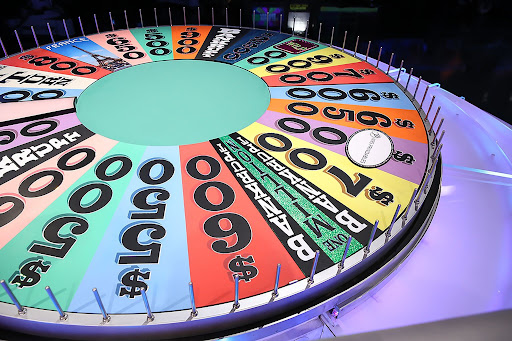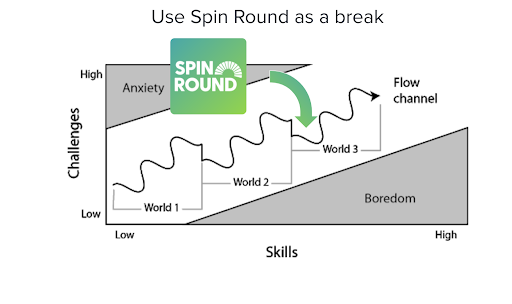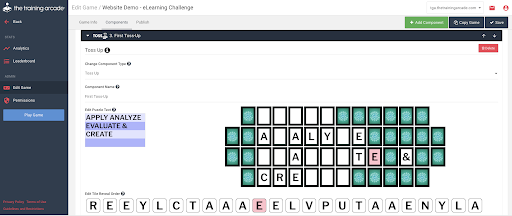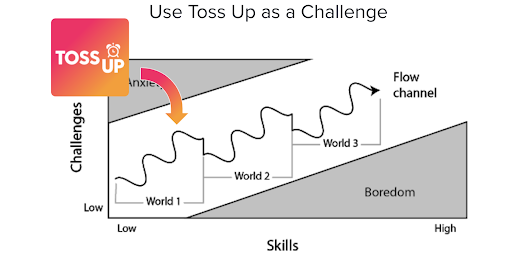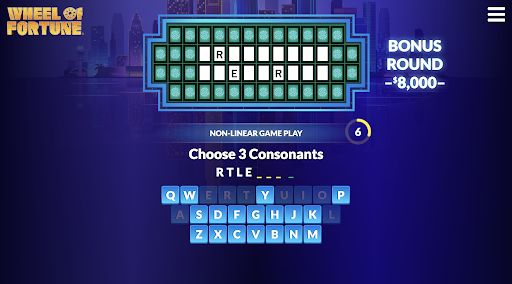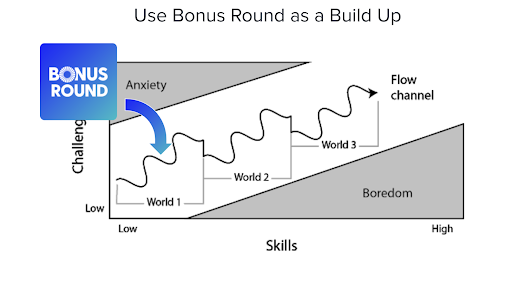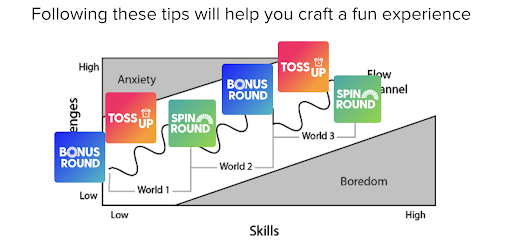by Julia Detar, Game Designer and Carrie Wiser, Senior Instructional Designer
Looking to engage learners with wordplay? Wheel of Fortune® is the newest game in The Training Arcade®. It’s a great way to pre-test, pre-teach, present, or practice key terms and concepts. Just like the game show, there are three types of rounds—Spin, Toss Up, and Bonus. You can arrange them in whatever order best supports your learning objectives.
Building a Wheel of Fortune game is quick and easy. Choose a round type, type your puzzle, and adjust settings as needed. You can even insert other learning material (text, images, or videos) before or after each puzzle to provide context, support, and reinforce the experience.
How Do You Design an Effective Wheel of Fortune Learning Game?
Let’s start by drawing some inspiration from video game design. Because it is puzzle-based, building a Wheel of Fortune game is a little different than building a Trivia game or a series of knowledge checks. Game design is all about building fun and engaging experiences, but it’s also about teaching. Whether players are battling a boss in Zelda Breath of the Wild or learning pattern groupings in Candy Crush, they need to learn and improve strategies to get better at the game. And game designers need to teach those techniques slowly over the course of the gameplay. Here are three key game design techniques that we used when creating the Wheel of Fortune game to ensure the end result is both fun and engaging.
- Consider the user’s perspective. Game designers operate from a UX (user experience) perspective. Instead of focusing on the creator, they focus on the learner. What will they feel? Will they know where to go and what to do? Will they be confused about the point of the game, or will their choices feel meaningful? As described by Hodent (2021), the user experience should be designed “in the hope that users will have a specific (and good) experience while interacting with it.”
- Set the pace for motivation. Game designers think about the difficulty within a world or experience along a flow channel. Similar to Vygotsky’s Zone of Proximal Development, they always want to present a challenge just above a player’s comfort zone. If the challenges are too hard, players will be frustrated and anxious. But if they are too easy, players will be bored. In both cases, players will disengage from the game. As players get better at the game or more familiar with the learning content, you’ll have to provide ever-increasing challenges to stay just above their comfort level.
- Provide breaks on the way up. Learning can be a lot like lifting weights—you need to do them in sets or else you’ll get fatigued and strain yourself. Game designers try to provide variation within the experience. Some challenges are stretched well above a player’s comfort zone, but they are followed by a pause, break, or a very easy challenge. This break is important after a challenging period so that players won’t fatigue.
Wheel of Fortune has three different rounds that allow you to easily provide variety and fine-tune the difficulty level so you can keep your learners motivated and engaged. But before you can do that you need to know a little bit more about each round, what makes them different, and how to arrange them around a player’s “flow state.” The three rounds are:
- Spin Round
- Toss Up Round
- Bonus Round
Spin Round
This is what people think about when they think about Wheel of Fortune: the big wheel that contestants spin. There are 3 human conditions that make this round so much fun to play.
- Random Spin. There is something very engaging about wanting to know what happens after you spin the wheel. Are you going to land on that $5000 slot or hit that Bankrupt wedge? The famous psychologist B.F. Skinner (1948) demonstrated that we have a natural instinct to repeat activities that might lead to a chance for a random reward.
- Amount Builds. Tension is created as the player’s dollar balance increases but could get taken away. Spinning the wheel with a $15,000 balance seems a lot riskier than the first time you spin the wheel. The probability of losing a turn or hitting bankrupt hasn’t changed, but the perception of risk increases when there is more to lose.
- Anticipation of Win. Many contestants know the answer before they solve the puzzle. They can visualize winning the round (win-state feeling), and then make calculated risks to extend this positive feeling. For example, they might try to spin the wheel “one more time” to guess consonants that are still left in the phrase and win a few extra hundred dollars.
These 3 things really make the Spin round engaging and fun, but they also increase randomness. Players do not have control over the wheel, so their scores are more likely to reflect luck rather than knowledge. As a result, it doesn’t provide clean assessment data. Wheel of Fortune, as a training game, is highly effective and fun for knowledge checks, but not necessarily in the Spin Mode. So it is best to use Spin round to introduce concepts, drive engagement or buy-in, and to provide breaks in between or on the way up to more challenging content—not for assessment.
Learning Design Tips for the Spin Round
There is a lot of energy and excitement during this part of the game, but it is also the most challenging round to design and play! Players are very focused (consciously or subconsciously) on gameplay strategies such as letter and wheel probabilities. Our human tendency towards selective attention makes it hard for them to switch between these strategies and the content, too. To test this out yourself, watch this video by Daniel Simons and Christopher Chabris.
Because learners have so much on their minds during this round, learning content may appear much harder than it actually is. Players are also primed to focus on letter probability, so words with a lot of uncommon letters will seem harder. Instead of using this for your most difficult and challenging puzzles, think of it as a fun and safe space for players to get familiar with and practice content. Here are some quick tips for designing a more fun, engaging, and effective Spin round.
- Use the Spin round to introduce terms and increase engagement
- Focus on fun and novelty – not assessment
- Build puzzles that include common letters, words, or phrases
- Keep the category short and simple – players will quickly read it and are more likely to forget it, since some of their attention is focused on game strategy
- Remember: the Artificial Intelligent (AI) in the game or “competitor” provides hints; you can adjust the level of the hints when you build each puzzle
Toss Up Round
During the Toss Up round, letters are revealed one by one. Players guess the puzzle as soon as they can before all of the letters are revealed.
Players don’t spin the wheel, so the category and the puzzle have their full attention. Because letters are revealed over time, a clue system is built-in. As a result, Toss Up is the perfect place for very challenging learning content or words or phrases with uncommon lettering. You can also use it to test people’s knowledge because scores are based on how quickly a person solves; not by random wheel spins. We recommend that you use Toss Up to provide peak challenges and to use as a knowledge check for learners.
Learning Design Tips for the Toss Up Round
The Toss Up round starts off challenging (no letters are shown), but it gets easier until players can be sure they know the answer. Unlike the Spin round, players only have to focus on solving the puzzle. So they are more likely to read and retain the category name and they will have more mental space to focus on the content.
- Use the Toss Up round for more difficult and challenging content
- If your puzzles have uncommon letters, use this instead of the Spin round
- Use it to assess learners
- Write clear, descriptive categories – they will greatly impact the difficulty
- Remember: A hint system is built-in, one letter at a time; you can change the order and pacing when you build each puzzle
Bonus Round
The Bonus Round starts with a few letters revealed (usually RSTLNE, but you can customize to meet your needs). You may allow players to select a few additional letters as clues. Players must solve the puzzle before the time is up. In the game show, the Bonus round is always the very last puzzle. It is usually quite challenging and intended to “stump” people. But in your learning game, you do not have to make it that difficult and you can insert it any place you’d like.
The difficulty of the Bonus round has a lot to do with the letters you provide players upfront and how many letters you let them guess. When you build the game, you can customize this to fit your needs—provide no letters, or up to any 6 letters; and how many additional letters (up to 3 consonants and 2 vowels) players can choose. Keep in mind that after all of these letters are revealed, there are no more clues so your players might get stuck. As a result, the category plays a key role in how difficult the puzzle will be. All told, as a result of their structure, Bonus Rounds tend to be more difficult for learners to solve than the Spin Round but easier than the Toss Up. Use Bonus round for practice or assessment, to build up to a challenge, and to insert more variety and novelty into the user experience.
Learning Content Tips for the Bonus Round
Use the Bonus round as another fun way for players to practice content and be assessed on what they’ve learned.
- Use the Bonus round for easier knowledge checks
- Stick with more common words to avoid players frustration
- Write clear, descriptive categories
- Remember: There are no hints other than the letters you reveal (RSTLNE) and the letters the players guess, so those choices greatly impact the difficulty of the puzzle
One Last (Important) Tip: Don’t Just Create – Test and Play!
Earlier, we talked about how game design is focused on the user experience. That perspective is key to crafting good puzzles for Wheel of Fortune. When you first get started, you won’t really get a good sense of how difficult the puzzle will be until you see it and play it yourself. So it’s important to spend time playing the rounds to see what the puzzles are like and how your content feels. Ask other people to play them too! You can easily back and tweak the difficulty or change the puzzle types, clues,or categories. You’ll soon be able to create a great flow state that will keep your users engaged and having fun with your learning content.

